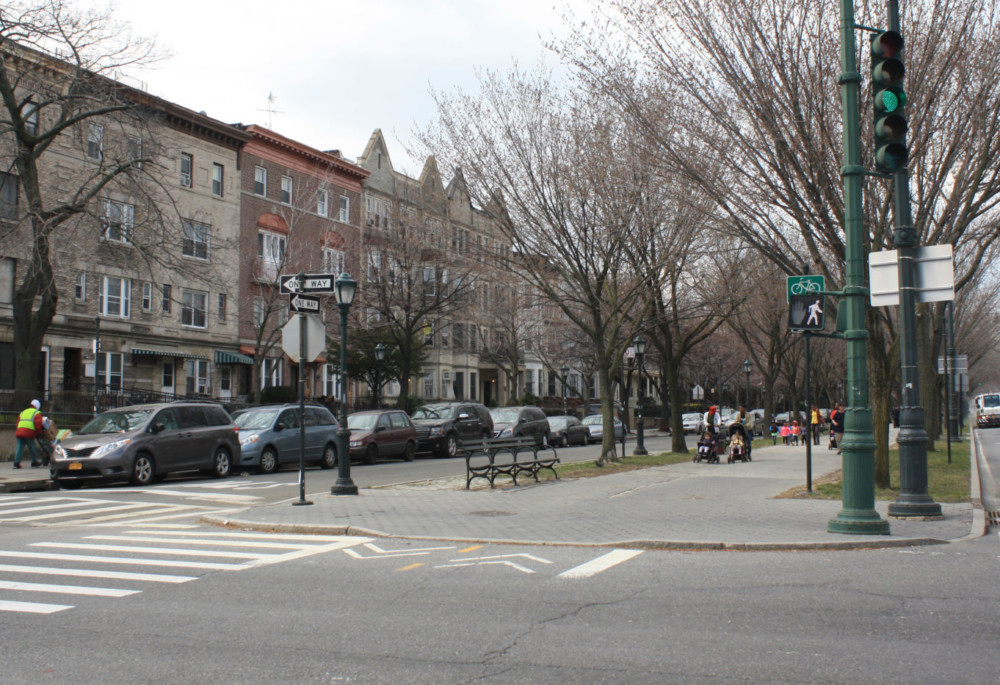Eastern Parkway
Frederick Law Olmsted and Calvert Vaux
1870-74
NYC Scenic Landmark, National Register of Historic Places
Eastern Parkway, the world’s first six-lane parkway and one of only 10 scenic landmarks in New York City, was built between 1870 and 1874. The parkway, a term that Olmsted himself coined, was modeled on Parisian boulevards, and designed for “promenading” and leisurely carriage rides and strolls. Its broad green medians with rows of trees are flanked on either side by service roads originally meant for carriages. Though it was narrowed over the years, the parkway retains this layout today. Eastern Parkway was designed to extend the picturesque character of Prospect Park, also by Olmsted and Vaux, eastward into the neighborhoods of Brooklyn. It runs between Grand Army Plaza and Ralph Avenue, which was, at the time, Brooklyn’s eastern border. Olmsted & Vaux envisioned mansions and townhouses lining both sides of the parkway, a goal never realized in great numbers. Instead, Eastern Parkway is lined with middle-class apartment buildings, rowhouses and fine civic buildings such as museums, houses of worship, theaters and libraries. Today, this “shaded green ribbon,” as Olmsted called it, forms the boundary between Crown Heights North and Crown Heights South.
